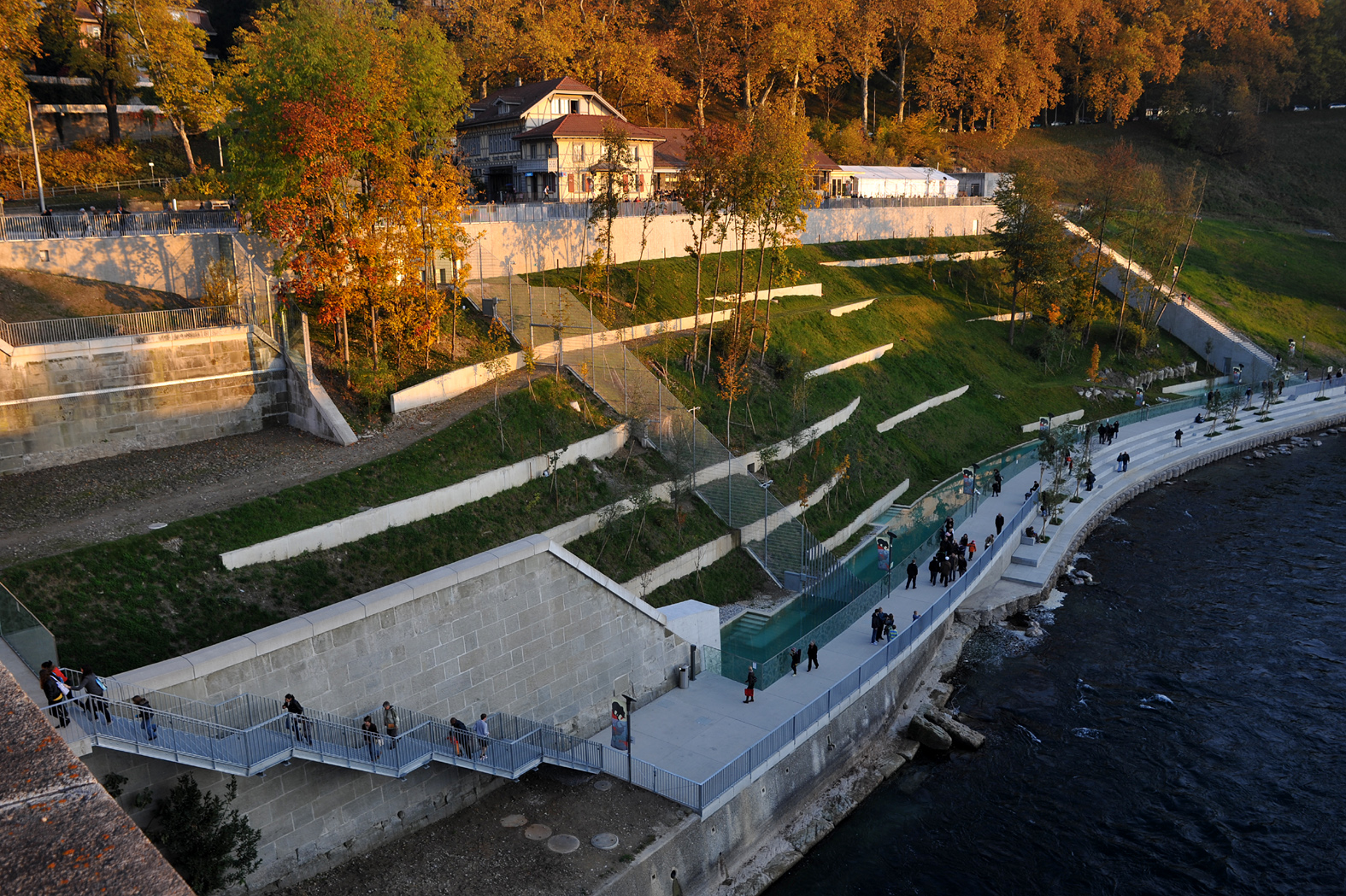The Bern Bear Park, nestled along the banks of the Aare River in the Swiss capital of Bern, stands as a unique and ethically designed habitat for bears, offering visitors a chance to observe these majestic creatures in a setting that prioritizes their well-being. Opened in 2009, the Bear Park represents a departure from traditional zoo enclosures, providing a more natural and enriching environment for its residents.
One of the distinctive features of the Bern Bear Park is its location on the edge of the UNESCO-listed Old Town of Bern. Situated near the iconic Nydegg Bridge, the park offers panoramic views of the cityscape and the picturesque Aare River. The proximity to the historic heart of Bern adds to the charm of the Bear Park, making it an integral part of the city’s cultural and natural tapestry.
The primary mission of the Bear Park is to provide a habitat that closely resembles the bears’ natural environment, allowing them to express natural behaviors and instincts. The park spans an area of over 6,000 square meters and is designed to simulate a forested landscape with varying elevations, trees, and water features. This thoughtful design promotes the physical and mental well-being of the bears, offering them opportunities for exploration, climbing, and swimming.
As of my last knowledge update in January 2022, the Bear Park is home to both European brown bears and Asiatic black bears. The residents are bears that have been rescued from suboptimal living conditions, often involving inadequate enclosures or inappropriate domestic settings. The Bear Park provides a safe and spacious refuge for these bears, allowing them to live out the remainder of their lives in a more natural environment.
A key element of the Bear Park’s design is the river enclosure that allows the bears to engage in natural behaviors associated with water. The Aare River flows through the park, and the bears can swim, fish, and explore the riverbanks. The water feature not only contributes to the bears’ well-being but also offers visitors a unique and immersive viewing experience as they observe the bears in their aquatic habitat.
Education and awareness play a significant role in the Bear Park’s mission. Visitors to the park have the opportunity to learn about bear behavior, conservation efforts, and the challenges faced by these animals in the wild. Interpretive signage and educational programs contribute to raising awareness about the importance of ethical animal care and the need for conservation initiatives.
The Bear Park also actively collaborates with other wildlife conservation organizations and participates in global efforts to protect bear populations and their habitats. By fostering an understanding of these animals’ natural behaviors and the threats they face in the wild, the Bear Park contributes to a broader conversation about wildlife conservation and the ethical treatment of animals in captivity.
The park’s location near Bern’s Old Town makes it easily accessible for both locals and tourists. Its integration into the cityscape, along with its commitment to ethical and sustainable practices, has made the Bern Bear Park a model for modern zoological facilities. It serves as an example of how wildlife conservation and public education can coexist to create a positive impact on both animal welfare and environmental awareness.
In conclusion, the Bern Bear Park stands as a testament to the evolving approach to wildlife conservation and the ethical treatment of animals in captivity. By providing a naturalistic and enriching environment for its residents, the Bear Park contributes to the well-being of bears while fostering education and awareness. Visitors to the park not only witness the beauty of these creatures but also become part of a broader effort to promote responsible and compassionate practices in the realm of animal care and conservation.

